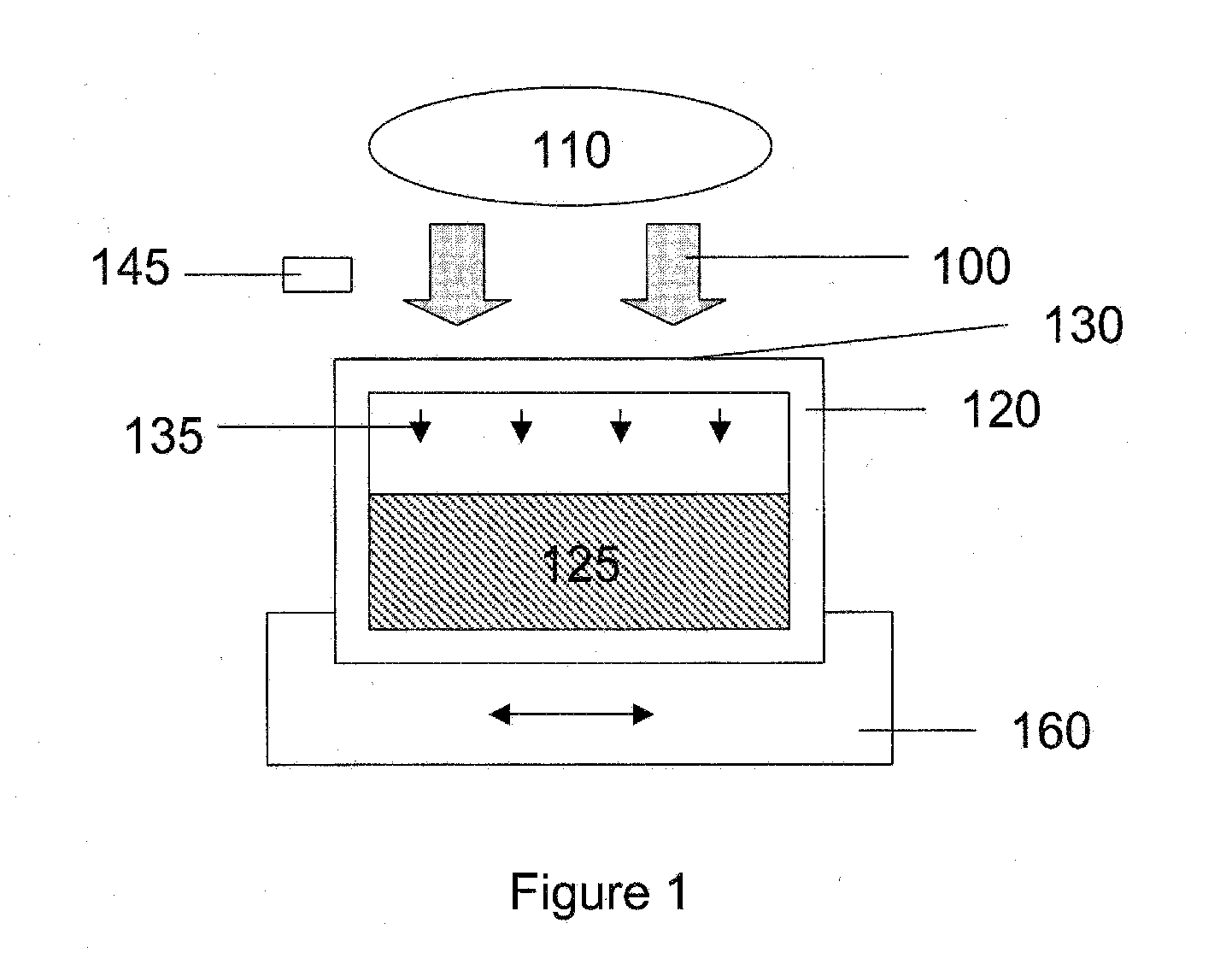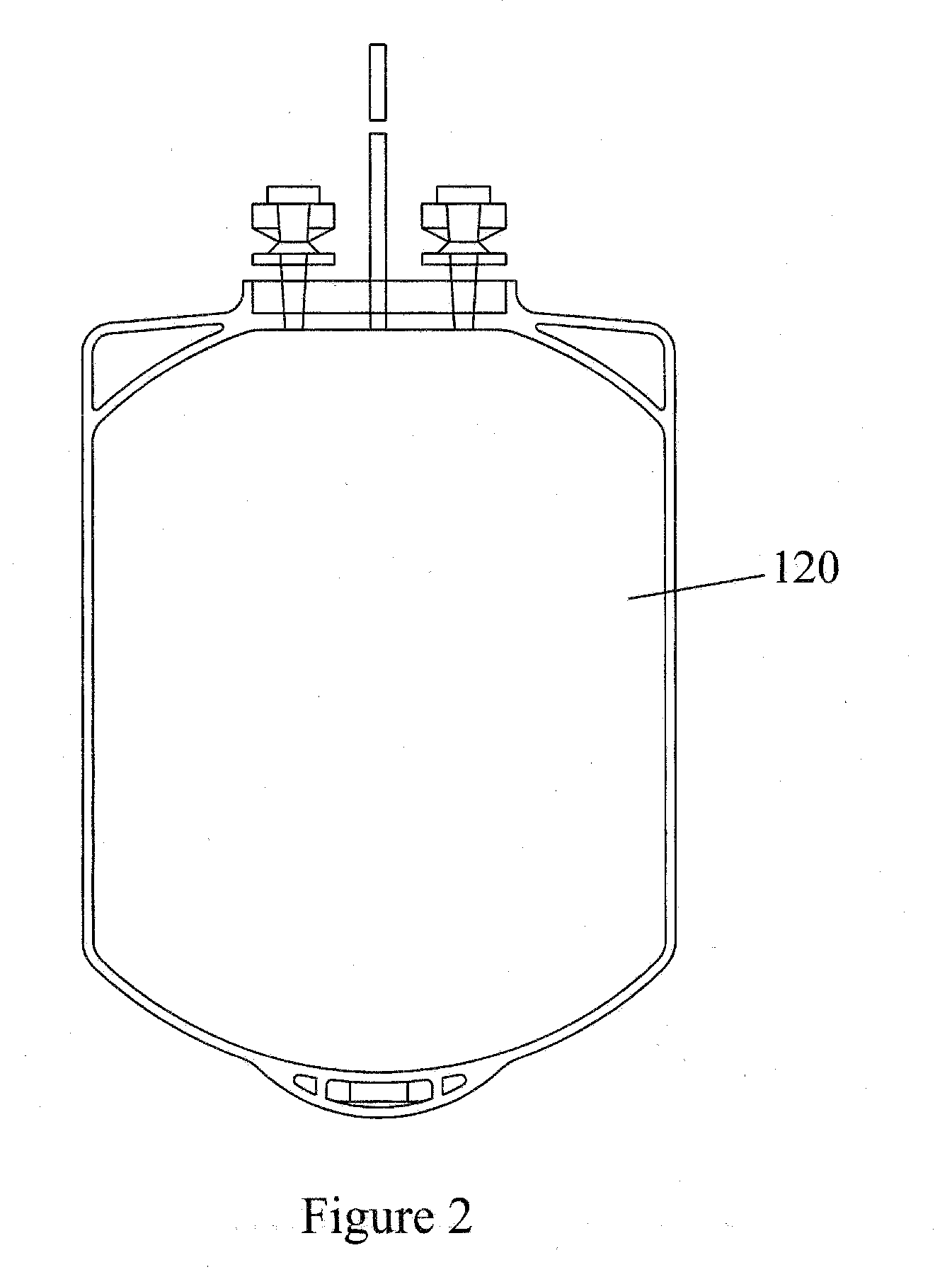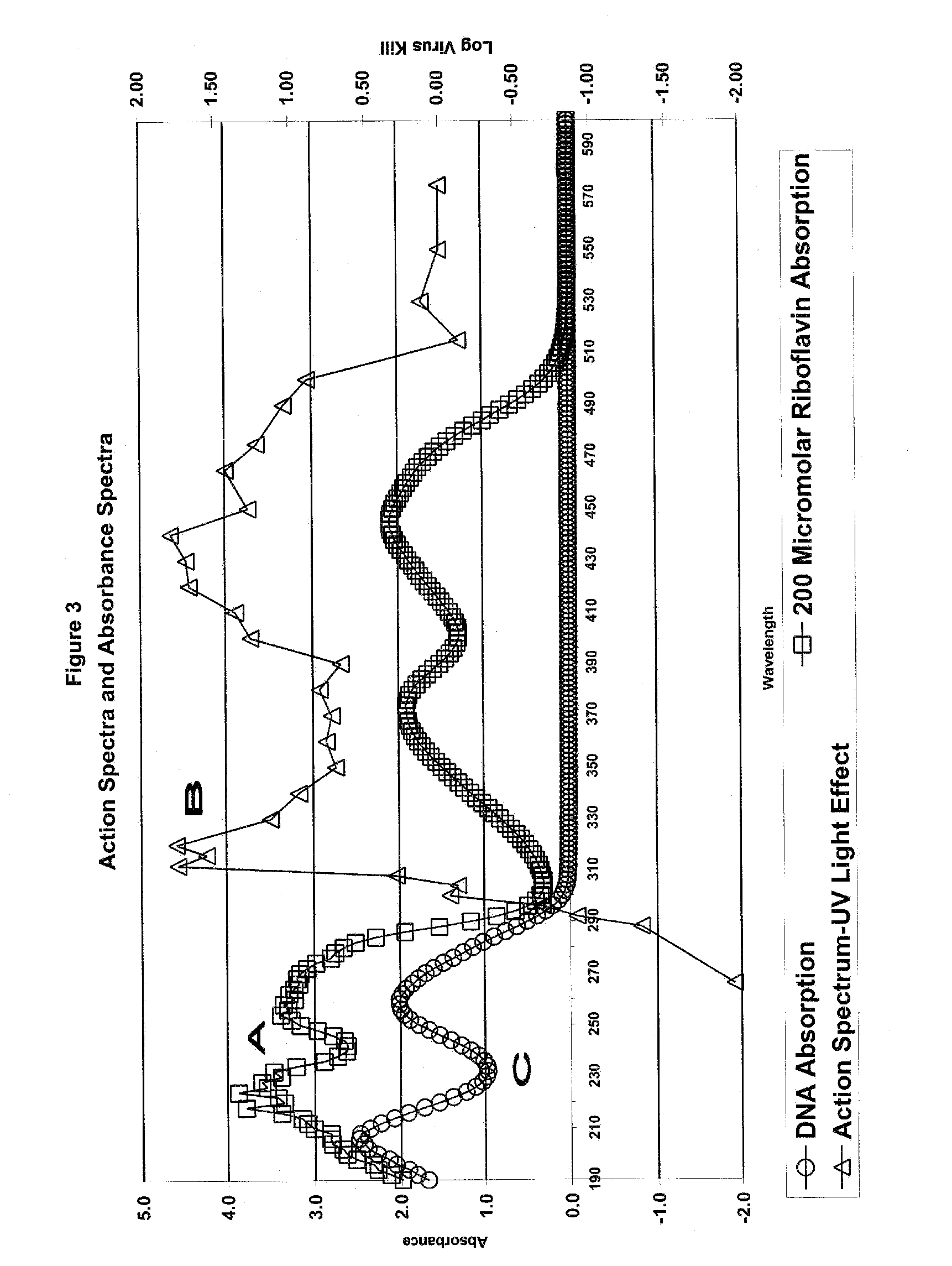Methods for Reducing Pathogens in Biological Samples
- Summary
- Abstract
- Description
- Claims
- Application Information
AI Technical Summary
Benefits of technology
Problems solved by technology
Method used
Image
Examples
example 2
Permeability of Citrate Plasticized Poly(Vinyl Chloride) Containers After Exposure to Ultraviolet Light
1. Introduction
[0111] The permeability of citrate plasticized poly(vinyl chloride) containers with respect to O2 and CO2 was characterized before and after exposure to electromagnetic radiation to verify their usefulness in the present methods. It is a goal of the present invention to provide containers that exhibit a permeability with respect to O2 and CO2 that does not decrease significantly upon exposure to electromagnetic radiation having wavelengths, radiant energies and radiant powers useful for processing blood and blood components. Further, it is a goal of the present invention to provide multifunctional containers useful for both storing and treating blood and blood components with electromagnetic radiation so as to avoid unnecessary and resource intensive additional sample transfer steps.
[0112] For platelet viability, platelets must be stored in a material that allows...
PUM
 Login to View More
Login to View More Abstract
Description
Claims
Application Information
 Login to View More
Login to View More - R&D
- Intellectual Property
- Life Sciences
- Materials
- Tech Scout
- Unparalleled Data Quality
- Higher Quality Content
- 60% Fewer Hallucinations
Browse by: Latest US Patents, China's latest patents, Technical Efficacy Thesaurus, Application Domain, Technology Topic, Popular Technical Reports.
© 2025 PatSnap. All rights reserved.Legal|Privacy policy|Modern Slavery Act Transparency Statement|Sitemap|About US| Contact US: help@patsnap.com



